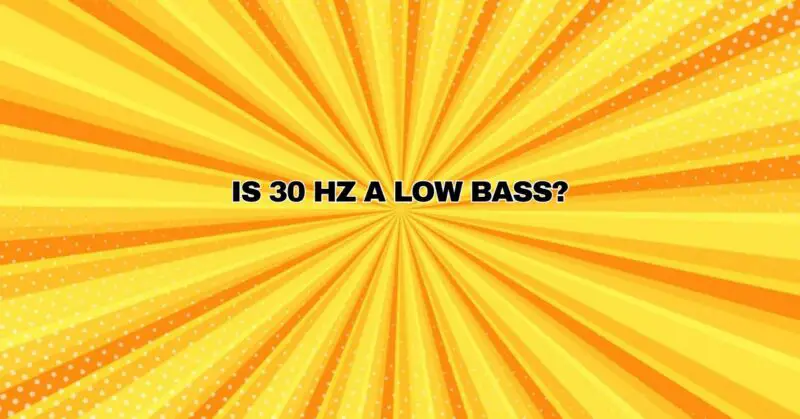In the intricate world of sound and music, the term “low bass” is often used to describe frequencies that resonate deep within the audible spectrum, conjuring images of powerful subwoofers and earth-shaking vibrations. But what about 30 Hz? Is it considered low bass, or does it dwell in a different realm of the sonic spectrum? In this comprehensive article, we will delve into the world of low bass frequencies, explore the characteristics of 30 Hz, and decipher whether it qualifies as low bass.
Understanding the Sonic Spectrum
Before we determine the classification of 30 Hz, it’s crucial to establish a foundation by understanding the broader context of the sonic spectrum.
- The Audible Spectrum: The audible spectrum represents the range of frequencies that the human ear can perceive. It typically spans from around 20 Hz, which is considered the lower limit of human hearing, to 20,000 Hz (20 kHz), the upper limit for many individuals.
Defining Low Bass
Low bass, as the name implies, refers to the lowest and deepest frequencies within the audible spectrum. These frequencies are characterized by their visceral impact, capable of creating vibrations that can be felt as much as heard. Low bass frequencies are essential for genres like electronic dance music (EDM), hip-hop, and cinematic soundscapes, where sub-bass thump and rumble play a significant role.
30 Hz: The Borderline of Low Bass?
Now that we have laid the groundwork, let’s explore whether 30 Hz can be considered low bass:
- Frequency Range: Low bass frequencies, by definition, extend below 60 Hz. Sub frequencies, which are synonymous with low bass, typically dwell in the 20 Hz to 60 Hz range. In this context, 30 Hz falls within the sub-bass or low bass realm.
- Audibility and Impact: Frequencies around 30 Hz are indeed capable of producing pronounced vibrations and physical sensations. These sensations are more prominent in dedicated subwoofer systems, which are designed to reproduce sub-bass frequencies accurately.
- Musical Applications: The 30 Hz range is crucial for certain musical genres, especially in electronic and hip-hop music, where sub-bass frequencies add depth, intensity, and a tactile element to the music. For many listeners, the sensation of sub-bass frequencies around 30 Hz is integral to the overall experience.
- Subwoofer Consideration: To fully appreciate and reproduce 30 Hz and lower frequencies, subwoofers with capable drivers and amplification are often employed. These subwoofers are designed to handle the demands of sub-bass frequencies, delivering the visceral impact that characterizes low bass.
Conclusion
In the realm of sound and music, 30 Hz indeed qualifies as low bass, residing within the sub-bass spectrum. Frequencies around 30 Hz are known for their ability to create vibrations and tactile sensations, making them integral to genres like EDM and hip-hop, as well as enhancing the cinematic experience. To fully embrace the power and depth of 30 Hz, a well-designed subwoofer system is often recommended. Whether you’re feeling the sub-bass thump at a concert or immersing yourself in the rumbling intensity of a movie soundtrack, 30 Hz plays a significant role in shaping the sonic landscape and leaving a lasting impression on our auditory senses.


